One important foundation for the work of the Women’s Well was rooted in the research and thinking of the Lithuanian archaeologist, Dr. Marija Gimbutas. After a long and successful career in archaeology, Marija turned her attention and study to what she would refer to as “the deeper layer,” the Neolithic cultures (6000-3500 BCE) of Eastern Europe. She named these cultures Old Europe. There she found evidence of communities that were peaceful, egalitarian, highly evolved artistically, living in harmony with the earth.
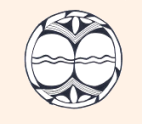
Figure 248-1, page 161, drawing by Linda Williams, fromThe Language of the Goddess, by Marija Gimbutas. Illustration of a ceramic dish decorated with double eggs, joined by a snake - symbol of becoming. Western Ukraine, c.3500 BC.
Due to their primary emphasis on female imagery, she concluded that these cultures honored women and the feminine. She saw that our ancestors from pre-history consistently represented their understanding of the great mystery of life in female form, as evidenced by the countless figurines of females, both human and animal, that were found throughout Europe dating both from the Neolithic and the Paleolithic eras. Her conclusion was that these findings were evidence of the worship of a Great Goddess in pre-history.
Marija published many books and articles in her lifetime, but it was The Goddesses and Gods of Old Europe (1982), The Language of the Goddess (1989), and The Civilization of the Goddess (1991), that were of most relevance to our work and study at the Women’s Well.
The founders of the Women’s Well are profoundly grateful to Marija Gimbutas and to the feminists, scholars, and artists of the 1980s who received Dr. Gimbutas’s research with open arms and who gave birth to the women’s spirituality movement, of which the Women’s Well in the Boston area was an expression.
.terracotta_figurine.png)
Figure 257(a), page 165, drawing by Patricia Reis, fromThe Language of the Goddess, by Marija Gimbutas. Illustration of a terracotta figurine. Northwest Bulgaria; 5000-4500 BC.
One of those women was Joan Marler, who worked closely with Marija Gimbutas as her personal editor from 1987 to 1994. Joan was the editor of The Civilization of the Goddess, by Marija Gimbutas, and of From the Realm of the Ancestors: An Anthology in Honor of Marija Gimbutas. (1997). She later founded the Institute of Archaeomythology, and is currently its Executive Director. Joan lectures internationally on the life and work of Marija Gimbutas and taught modern, folk, and ethnic dance for many years.
For five years, Joan came each fall to Massachusetts from California to introduce participants in the Women’s Spirituality Program to Marija’s work. She and Patricia Reis, also a colleague of Marija’s and later a co-founder of the Women’s Well, taught the opening weekend of the Women’s Spirituality Program. Joan showed us slide after slide of artifacts from the Neolithic cultures that Maria had researched and written about. She encouraged us to experience these images of Neolithic art and artifacts through our bodies and not just our minds. She taught us that the images were “encoded” with a language that our bodies could feel and respond to if we allowed that, and suggested that they offered healing on a cellular level. We responded to them with dance as well as modeling them in clay. Joan told us that the steps of the ancient dances she was teaching reflected the same patterns we saw on the Neolithic artifacts we were studying. At times these images and this honoring of the female form in ancient times moved us - women of the late twentieth century - to tears.
Thanks to the depth and breadth of Marija’s work, we know that as women forge ahead and gain new ground, we are both reinventing ourselves in present time as well as reclaiming profound aspects of our ancient past.
Brief Biography of Marija Gimbutas
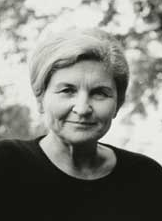 Marija Gimbutas (1921-1994) was a brilliant scholar with an incisive mind, the tenacity to pursue her studies despite difficult circumstances, and the courage to challenge much of the conventional thinking of her time. She was raised in Lithuania in a highly educated, cultured, and politically active family. As a teenager, she collected folksongs of her homeland and studied Lithuanian beliefs and prehistoric rituals of death. After graduating with honors from Ausra Gymnasium (high school), she attended Vytautas Magnus University, where she studied linguistics. She subsequently enrolled as a graduate student at the University of Vilnius where she studied archaeology, ethnology, folklore, linguistics, and literature. She married Jurgis Gimbutas, an engineer, when she was 20, and a year later completed a master's thesis on the topic “Modes of Burial in Lithuania in the Iron Age.” She was awarded her Master's Degree in 1942.
Marija Gimbutas (1921-1994) was a brilliant scholar with an incisive mind, the tenacity to pursue her studies despite difficult circumstances, and the courage to challenge much of the conventional thinking of her time. She was raised in Lithuania in a highly educated, cultured, and politically active family. As a teenager, she collected folksongs of her homeland and studied Lithuanian beliefs and prehistoric rituals of death. After graduating with honors from Ausra Gymnasium (high school), she attended Vytautas Magnus University, where she studied linguistics. She subsequently enrolled as a graduate student at the University of Vilnius where she studied archaeology, ethnology, folklore, linguistics, and literature. She married Jurgis Gimbutas, an engineer, when she was 20, and a year later completed a master's thesis on the topic “Modes of Burial in Lithuania in the Iron Age.” She was awarded her Master's Degree in 1942.
During World War Two, the Gimbutas family lived in Lithuania under first Soviet (1940-41) and then Nazi (1941-43) occupation. After Marija's first daughter was born in 1942, the family fled to Vienna and then to Innsbruck and Bavaria. Soon after the war ended she enrolled at Tubingen University in the French occupation zone, and in 1946 she was awarded a doctorate in archaeology with minors in ethnology and the history of religion. Her dissertation, “Burials in Lithuania in Prehistoric Times,” was published later that year. She had a second daughter the following year, and continued with her post-graduate studies in Heidelberg and in Munich, from 1947 to 1949.
Marija and her family emigrated in 1949 to Boston, Massachusetts, where for a time she worked menial jobs before beginning her work at Harvard University in 1950. At this point in her career, she had already published nearly 40 scholarly articles on Lithuanian prehistory and other subjects, and she had completed the research for a book on the symbolism of Lithuanian folk art (published in 1958). Marija's third daughter was born in 1954, and the next year she was named a Research Fellow of Harvard's Peabody Museum. She is said to have described the Peabody as the best library in the world for archaeology. It was there that she began to receive funding in the form of fellowships and prestigious awards to further her research into Eastern European archaeology, eventually earning a reputation as a world-class specialist on the Indo-European Bronze Age, Lithuanian folk art, and the prehistory of the Balts and Slavs.
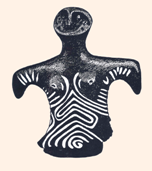
Figure 300, page 194, drawing by Patricia Reis, fromThe Language of the Goddess, by Marija Gimbutas. Illustration of a Vinca figurine with owl mask and wings. Northwest Bulgaria; 5000-4500 BC.
Her book, Prehistory of Eastern Europe was published in 1956. This monograph is the first summary ever to be published of all of the archaeological research on the Mesolithic, Neolithic and Copper Age cultures of Eastern Europe up to 1955. This material was previously unavailable to Western scholars due to political and linguistic barriers. Marija was a Fellow of the Center for Advanced Study in the Behavioral Sciences at Stanford University (1961-62), during which time she completed work on Bronze Age Cultures of Central and Eastern Europe (1965). She was a Professor of European Archaeology and Indo-European Studies at UCLA from 1963 to 1989. During this time she taught, researched, wrote numerous articles, and presented her work at international conferences and symposia. In addition, she directed major excavations of Neolithic sites in southeastern Europe.
In 1974 Marija published The Gods and Goddesses of Old Europe (republished in 1982 as The Goddesses and Gods of Old Europe, since most of the imagery is female). Most of the Neolithic sculptures in these texts were introduced to Western audiences for the first time. Among traditional archaeologists, it was common to dismiss these artifacts, largely comprised of female figurines, as being of minimal significance, and to refer to them merely as “fertility symbols.” Over years of study, however, Marija amassed an extensive and carefully catalogued collection of these artifacts which became the foundation for her later research and writings. Evidence from Neolithic habitation sites indicated that the settlements being excavated had been agrarian, peaceful, and egalitarian. Communities of up to 10,000 people cultivated the land, often along riverbeds, and coexisted apparently without fighting; no weapons were found and images did not depict conflict.
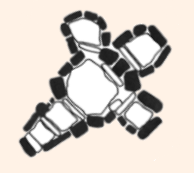
Figure 263-3, page 153, drawing by James Bennett, fromThe Language of the Goddess, by Marija Gimbutas. Diagram of a Neolithic burial mound in northwest Ireland, second half of 4th millenium BC.
The people crafted beautifully adorned fired-clay vessels, portable altars and other ritual artifacts, and produced a multitude of small female figurines, some with animal masks. Many of the houses contained an altar with clay figurines arranged upon it, suggesting a culture in which honoring the life-giving powers of a Mother Goddess and Mother Earth was a part of everyday life. This apparent reverence for Earth goddesses would have been in accord with Neolithic excavations revealing that the people of the Neolithic age frequently shaped their communal places of worship - such as henges, stone circles, labyrinths, and communal burial mounds - to resemble female forms.
In 1989, The Language of the Goddess was published, which focused on Marija's interpretation of Neolithic symbolism. By this time, Marija had achieved considerable renown reinterpreting European prehistory in light of her interdisciplinary background in linguistics, ethnology, and the history of religions, as well as archaeology. Her thinking challenged many traditional assumptions about the beginnings of European civilization. She traveled widely, lecturing and engaging in a vigorous exchange of ideas with colleagues in many countries.
Marija's commitment to an interdisciplinary approach led to the development of the field she named "archaeomythology". Her magnum opus, The Civilization of the Goddess, was published in 1991, and offered a summary of her life's work on Old European cultures, the religion of the Goddess, the Sacred Script, Old European social structure, and the end of Old Europe.
Drawing on her extensive research, Marija concluded that these peaceful, female-centered, agrarian “Old European” cultures were eventually overrun by horseback-riding nomads from the Russian Steppes over a period of two thousand years. She identified these newcomers as "Kurgans" who were proto-Indo-European speakers.

Figure 74-2, page 44, drawing by Linda Williams, fromThe Language of the Goddess, by Marija Gimbutas. Illustration of a Neolithic bowl with stream motif framed by dark bands. Peloponnese, mid-6th millenium BC.
In contrast to the Old European cultures, the invading nomads were warlike, hierarchical, and worshipped sky gods, and their incursions both subjugated and dispersed the long-lived Old European civilzation.
Based on an interdisciplinary synthesis of archaeology and linguistics, Marija proposed that the origin of Indo-European languages and Indo-Europeanized societies resulted from a struggle between two paradigms, one male-dominated, hierarchical, and warlike, and the other female-centered, egalitarian, and peaceable. She commented in an interview, “You study Indo-European mythology and Earth Goddess is there everywhere. She was inherited, probably, from the earlier religion.”
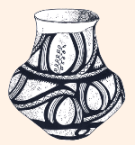
Figure 341-1, page 222, drawing by Linda Williams, fromThe Language of the Goddess, by Marija Gimbutas. Illustration of a Cucuteni vase, painted black on red. Western Ukraine, 3500 BC.
As a teacher, Marija actively encouraged students and colleagues from a variety of fields to examine problems in European prehistory with an inclusive and interdisciplinary point of view. She stressed the importance of investigating the enormous changes in beliefs, rituals, and social structure that took place between 4500 and 2500 BCE, in order to more fully understand subsequent European cultural development. In her view, this was one of the most complex and least understood periods in prehistory. She organized two international conferences on “The Transformation of European and Anatolian Culture, 4500-2500 BC, and its Legacy,” one in 1979 and one in 1989, and emphasized that archaeologists, linguists, mythologists, physical anthropologists, and ancient historians must collaborate and exchange information in order to further a better understanding of Old European and Indo-European history.
Today there are many web sites where you can find more detailed information about Marija’s life, her research and writing, and her thinking. Not everyone agrees with her views or her conclusions, but few contest her brilliant scholarship or the importance of the questions her research raises about the roots of western civilization. Here are some sites we recommend:
Archaeomythology.org
Starhawk & Donna Read Joint Project
Spretnak-Journal
The content on this web site is a co-creation of a number of women, to whom we are extremely grateful. The image on our banner (top of page) depicts the interior of a Karanovo dish from Bulgaria, c. 4500 BC. Source: Figure 338, page 218, The Language of the Goddess, by Marija Gimbutas. Joan Marler, ed. New York: Harper & Row, 1989; used with permission.
Hover on black-and-white drawings on this page to see source information.
If you wish to contact us, we have a gmail address. Our screen name is womenswellinfo.
Web hosting is provided by freehostia.com.

Figure 248-1, page 161, drawing by Linda Williams, fromThe Language of the Goddess, by Marija Gimbutas. Illustration of a ceramic dish decorated with double eggs, joined by a snake - symbol of becoming. Western Ukraine, c.3500 BC.
.terracotta_figurine.png)
Figure 257(a), page 165, drawing by Patricia Reis, fromThe Language of the Goddess, by Marija Gimbutas. Illustration of a terracotta figurine. Northwest Bulgaria; 5000-4500 BC.
 Marija Gimbutas (1921-1994) was a brilliant scholar with an incisive mind, the tenacity to pursue her studies despite difficult circumstances, and the courage to challenge much of the conventional thinking of her time. She was raised in Lithuania in a highly educated, cultured, and politically active family. As a teenager, she collected folksongs of her homeland and studied Lithuanian beliefs and prehistoric rituals of death. After graduating with honors from Ausra Gymnasium (high school), she attended Vytautas Magnus University, where she studied linguistics. She subsequently enrolled as a graduate student at the University of Vilnius where she studied archaeology, ethnology, folklore, linguistics, and literature. She married Jurgis Gimbutas, an engineer, when she was 20, and a year later completed a master's thesis on the topic “Modes of Burial in Lithuania in the Iron Age.” She was awarded her Master's Degree in 1942.
Marija Gimbutas (1921-1994) was a brilliant scholar with an incisive mind, the tenacity to pursue her studies despite difficult circumstances, and the courage to challenge much of the conventional thinking of her time. She was raised in Lithuania in a highly educated, cultured, and politically active family. As a teenager, she collected folksongs of her homeland and studied Lithuanian beliefs and prehistoric rituals of death. After graduating with honors from Ausra Gymnasium (high school), she attended Vytautas Magnus University, where she studied linguistics. She subsequently enrolled as a graduate student at the University of Vilnius where she studied archaeology, ethnology, folklore, linguistics, and literature. She married Jurgis Gimbutas, an engineer, when she was 20, and a year later completed a master's thesis on the topic “Modes of Burial in Lithuania in the Iron Age.” She was awarded her Master's Degree in 1942.During World War Two, the Gimbutas family lived in Lithuania under first Soviet (1940-41) and then Nazi (1941-43) occupation. After Marija's first daughter was born in 1942, the family fled to Vienna and then to Innsbruck and Bavaria. Soon after the war ended she enrolled at Tubingen University in the French occupation zone, and in 1946 she was awarded a doctorate in archaeology with minors in ethnology and the history of religion. Her dissertation, “Burials in Lithuania in Prehistoric Times,” was published later that year. She had a second daughter the following year, and continued with her post-graduate studies in Heidelberg and in Munich, from 1947 to 1949.
Marija and her family emigrated in 1949 to Boston, Massachusetts, where for a time she worked menial jobs before beginning her work at Harvard University in 1950. At this point in her career, she had already published nearly 40 scholarly articles on Lithuanian prehistory and other subjects, and she had completed the research for a book on the symbolism of Lithuanian folk art (published in 1958). Marija's third daughter was born in 1954, and the next year she was named a Research Fellow of Harvard's Peabody Museum. She is said to have described the Peabody as the best library in the world for archaeology. It was there that she began to receive funding in the form of fellowships and prestigious awards to further her research into Eastern European archaeology, eventually earning a reputation as a world-class specialist on the Indo-European Bronze Age, Lithuanian folk art, and the prehistory of the Balts and Slavs.

Figure 300, page 194, drawing by Patricia Reis, fromThe Language of the Goddess, by Marija Gimbutas. Illustration of a Vinca figurine with owl mask and wings. Northwest Bulgaria; 5000-4500 BC.
In 1974 Marija published The Gods and Goddesses of Old Europe (republished in 1982 as The Goddesses and Gods of Old Europe, since most of the imagery is female). Most of the Neolithic sculptures in these texts were introduced to Western audiences for the first time. Among traditional archaeologists, it was common to dismiss these artifacts, largely comprised of female figurines, as being of minimal significance, and to refer to them merely as “fertility symbols.” Over years of study, however, Marija amassed an extensive and carefully catalogued collection of these artifacts which became the foundation for her later research and writings. Evidence from Neolithic habitation sites indicated that the settlements being excavated had been agrarian, peaceful, and egalitarian. Communities of up to 10,000 people cultivated the land, often along riverbeds, and coexisted apparently without fighting; no weapons were found and images did not depict conflict.

Figure 263-3, page 153, drawing by James Bennett, fromThe Language of the Goddess, by Marija Gimbutas. Diagram of a Neolithic burial mound in northwest Ireland, second half of 4th millenium BC.
In 1989, The Language of the Goddess was published, which focused on Marija's interpretation of Neolithic symbolism. By this time, Marija had achieved considerable renown reinterpreting European prehistory in light of her interdisciplinary background in linguistics, ethnology, and the history of religions, as well as archaeology. Her thinking challenged many traditional assumptions about the beginnings of European civilization. She traveled widely, lecturing and engaging in a vigorous exchange of ideas with colleagues in many countries.
Marija's commitment to an interdisciplinary approach led to the development of the field she named "archaeomythology". Her magnum opus, The Civilization of the Goddess, was published in 1991, and offered a summary of her life's work on Old European cultures, the religion of the Goddess, the Sacred Script, Old European social structure, and the end of Old Europe.
Drawing on her extensive research, Marija concluded that these peaceful, female-centered, agrarian “Old European” cultures were eventually overrun by horseback-riding nomads from the Russian Steppes over a period of two thousand years. She identified these newcomers as "Kurgans" who were proto-Indo-European speakers.

Figure 74-2, page 44, drawing by Linda Williams, fromThe Language of the Goddess, by Marija Gimbutas. Illustration of a Neolithic bowl with stream motif framed by dark bands. Peloponnese, mid-6th millenium BC.
Based on an interdisciplinary synthesis of archaeology and linguistics, Marija proposed that the origin of Indo-European languages and Indo-Europeanized societies resulted from a struggle between two paradigms, one male-dominated, hierarchical, and warlike, and the other female-centered, egalitarian, and peaceable. She commented in an interview, “You study Indo-European mythology and Earth Goddess is there everywhere. She was inherited, probably, from the earlier religion.”

Figure 341-1, page 222, drawing by Linda Williams, fromThe Language of the Goddess, by Marija Gimbutas. Illustration of a Cucuteni vase, painted black on red. Western Ukraine, 3500 BC.
Today there are many web sites where you can find more detailed information about Marija’s life, her research and writing, and her thinking. Not everyone agrees with her views or her conclusions, but few contest her brilliant scholarship or the importance of the questions her research raises about the roots of western civilization. Here are some sites we recommend:
Archaeomythology.org
Starhawk & Donna Read Joint Project
Spretnak-Journal
Hover on black-and-white drawings on this page to see source information.
If you wish to contact us, we have a gmail address. Our screen name is womenswellinfo.
Web hosting is provided by freehostia.com.
